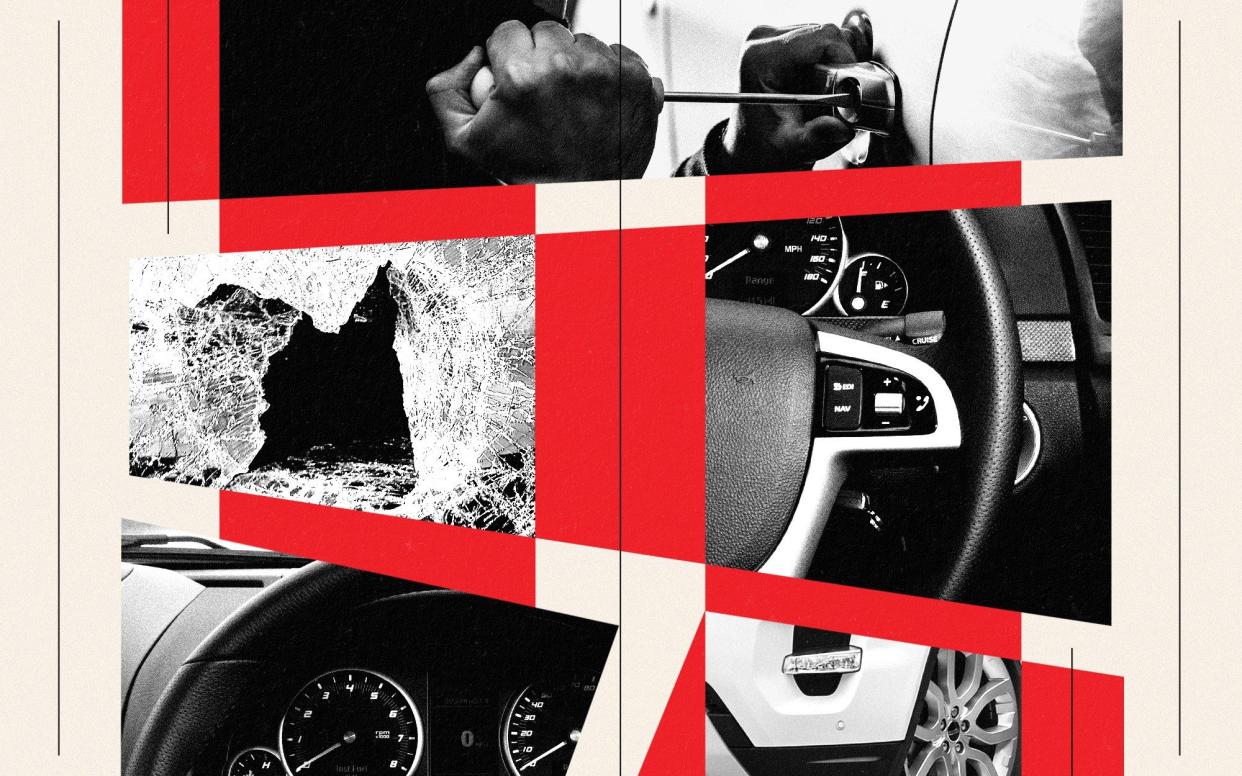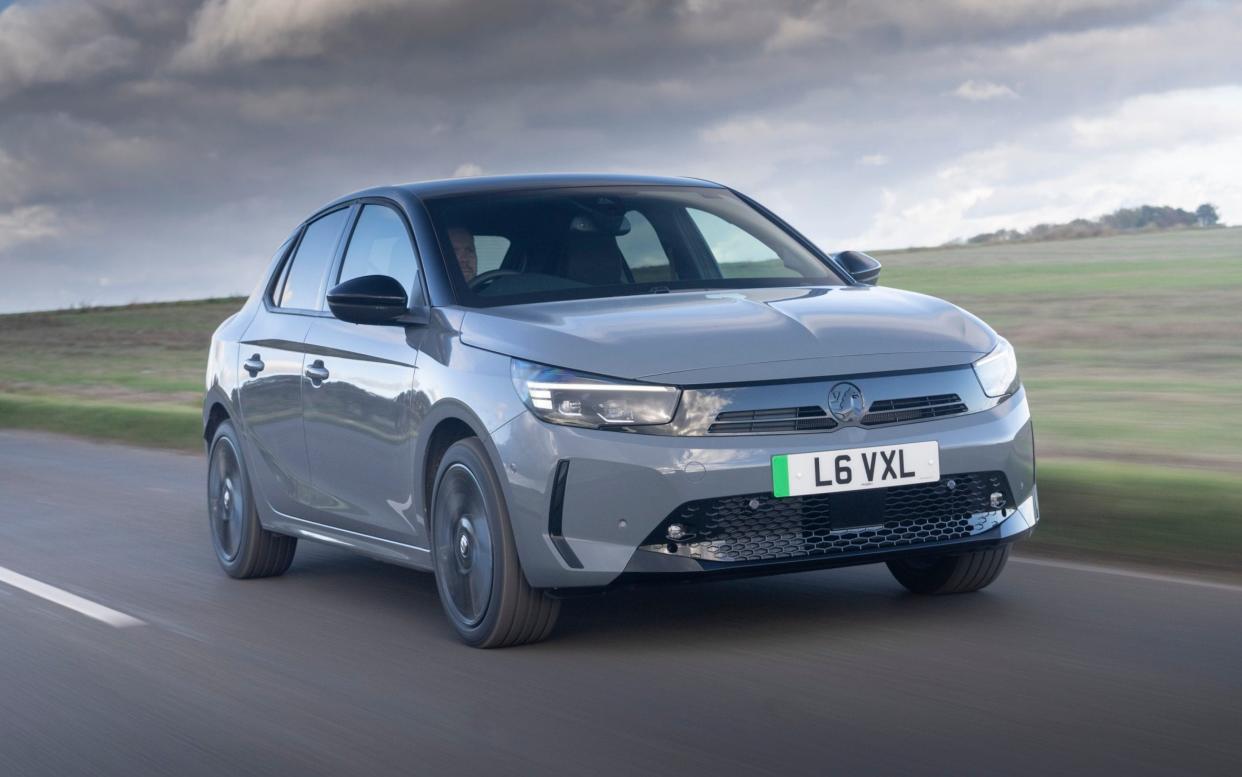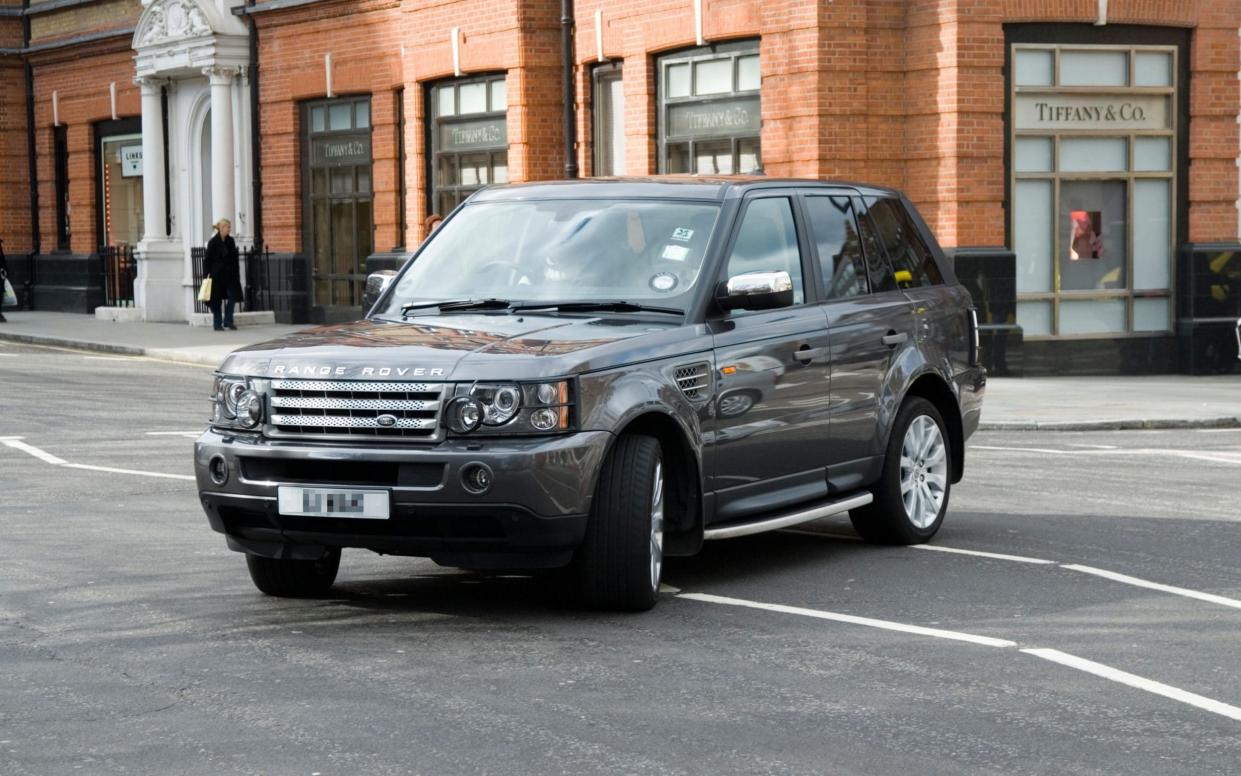Why your car has never been so at risk from theft – and what you can do about it

Millions of us believe our car’s state-of-the-art security will keep it safe from thieves. And then, along with thousands of others, that apparently impregnable – and expensive – motor is stolen, often from under the owner’s nose.
For the first time since the 1990s, we’re seeing a sustained surge in car theft. Last year, the number of cars stolen in England and Wales hit 132,489 – a 16-year high. It’s resulted in some of our best-loved brands and most popular models becoming uninsurable because they’re so vulnerable to thieves.
Insurers are reporting record payouts with claims for car crime at the highest level ever. Experts claim car makers are playing catch-up with security. And police appear so overwhelmed and understaffed that in many parts, the number of car crimes being solved ranges between zero and pitifully small.
In the 1990s, when the UK was known as the car crime capital of Europe (that title’s worn by Italy now), cars could be stolen in seconds by thieves armed with little more than a screwdriver. To stem a growing joyriding tide, lawmakers insisted new cars could only be sold if they had a built-in engine immobiliser.
This stopped cars being driven without the key. Stealing new cars then involved burgling properties or carjacking, neither of which was overly appealing to thieves and car theft numbers slumped. Fast forward into the 2000s and ever-more electronics in cars presented criminals with new opportunities.
This new generation of car thieves – more closely related to sophisticated computer hackers than their bent metal coat hanger-wielding predecessors – are now demonstrating they can steal just about any car with insouciant and non-confrontational ease.
What’s fuelling the increase?
Clive Wain, a former police officer and police liaison at vehicle security company Tracker, said: “Cars are more at risk than ever and for a variety of reasons. Executive vehicles are worth a lot of money. The scarcity and cost of spares is also leading cars to be stolen and broken for parts. And where organised crime thinks there’s a fertile hunting ground it’ll exploit that.”
Police agreed that gangs are increasingly playing a part. A National Police Chiefs’ Council (NPCC) spokesperson said: “Intelligence suggests a large proportion of vehicle theft can be attributed to organised crime groups.”
How easy cars are to steal plays a part too. The latest crime wave is being driven by criminals exploiting the keyless entry systems that unlock without the driver touching the key.
Head of transport practice at car security experts NCC Andy Davis explained: “The industry has known for more than a decade about this kind of theft and for a time it was slow to react. But it all comes down to consumer demand. Historically, people have cared a bit more about their own convenience than the security of their vehicles.
“Car companies do a risk assessment on new models. It all goes into a computer and an algorithm decides what’s worth doing. We’ve seen examples where car makers have saved pennies on the chips in keyless fobs but their lower level of encryption then makes the car easier to steal.”
How are cars stolen?
In 2001, Renault became the first manufacturer to fit what it called “keyless entry” to a range of affordable cars. It boasted: “This is one of Renault’s leading innovations that will leave its mark on the history of automotive vehicles.” Job done there – and not in a good way.
With keyless, a chip in the key fob transmits a radio code to the car. If it’s the code the car’s expecting, it’ll unlock itself and can be driven. To defeat it, thieves used techniques from hacking communication systems.
The resulting relay theft was developed in Russia and worked its way across Europe. One thief uses a handheld device near the owner’s home to detect the signal being emitted from the key fob. They then relay that signal to a colleague’s second device by the car. This fools the vehicle into believing the real key is present so it unlocks and can be driven.
It’s as laughably simple as it sounds. The kit they use is highly portable and can be bought easily online. “You don’t even need to be on the dark web,” former police officer and now a director at stolen vehicle recovery service AX-UK Neil Thomas said. Andy Davis added: “NCC was asked to build a relay theft module and we bought all the components from Maplin on the high street for less than £100.”
Even so, burglaries to steal keys still happen. Jenny’s* house in Sutton Coldfield near Birmingham was broken into. “It was about 3.30am, they ignored my handbag and just took the keys for my Volkswagen Tiguan and my partner’s Hyundai Ioniq.
“The Hyundai had an AX tracker fitted so it was found within the hour. My car was only found a couple of weeks later when it was written off in Birmingham during a police chase following another burglary.”
Anyone CAN steal a car
The new car theft kid on the block is attacking the vehicle’s Central Area Network (CAN). This so-called CAN Bus is the car’s equivalent to our nervous system. Thieves use devices to access the car’s CAN Bus by attacking wiring around the lights or mirrors.
The tools, often cunningly disguised as a Bluetooth speaker, then use code leaked from car manufacturers to disable the alarm and immobiliser so the car can be driven.
We’ve seen a price list for gadgets that will unlock the latest model cars. The most expensive tool costs £21,000 but criminals quickly get their money back. “They rent the kit out to other criminals for, say, £500 a week,” Thomas explained.
What happens to stolen cars
As soon as a car has been stolen, particularly if it’s a high-end model which might have a tracking device fitted, it will be parked somewhere for a couple of days where it blends in with the surroundings.
Assuming no one finds it, one of four eventualities will occur. It might be used in a crime; it could be stripped for parts; it may be sent abroad; or it could get a new identity, so it doesn’t flag up as stolen, and then be sold.
Whatever the outcome, it’s likely to have been stolen to order. “The most popular use of performance cars was in commercial burglaries, especially making off at speed from cash machine burglaries,” the University of Huddersfield’s Preventing Vehicle Crime report found.
Stolen cars are sent abroad in shipping containers, usually to either Africa, the Middle East or Eastern Europe. Working with Interpol, AX-UK tracked a Range Rover to Kampala in Uganda, where it found £1 million worth of stolen cars from Britain.
The NPCC told us: “Disposal routes for stolen vehicles are also a key focus and we work closely with the National Vehicle Crime Intelligence Service (NAVCIS) to target ports, which we know are a key route for moving stolen vehicles, as well as with police forces and colleagues in the NPCC metal theft portfolio to tackle so-called ‘chop shops’.”
Chop shops are where stolen cars are stripped for their parts. Tracker’s Clive Wain said: “In 2020 during the pandemic, the police we work with uncovered two chop shops. Last year there were 55. And that’s only a small snapshot of what’s happening nationally.
“There was one case where vehicles were shipped from the UK to eastern Europe, stripped, and their parts were sold back to unsuspecting UK buyers.” Parts such as doors, bumpers, seats and expensive electronic components are virtually untraceable.
Europol didn’t respond to our request for an interview but Neil Thomas doesn’t believe Brexit has affected car crime. “In my experience, car crime is borderless. Leaving the EU has had no impact.”

What are the most stolen cars?
The most stolen cars are usually the most popular. Bigger-selling models are easier to shift to unsuspecting buyers. And there’s a larger market for spares if you’re breaking them for parts.
According to Driver Vehicle Licencing Agency (DVLA) records, by far the most stolen car is the Ford Fiesta – also Britain’s most-owned car. Between October 2022 and September 2023, 6,015 Fiestas were stolen, more than twice as many as the next most nicked, the Ford Focus on 2,257.
The Volkswagen Golf was third with Vauxhall’s Corsa and Astra next up. The Toyota RAV4 comes before premium brands edge into the top 10 with the Range Rover Evoque. Last year, 964 of those were stolen, just ahead of the Lexus RX and Audi A3 and Kia Sportage. Police reports show the most frequently stolen cars are between one and five years old.
Where is the worst for car crime?
If you live in the Midlands or Essex and you’re worried about having your car stolen, you have good reason. In terms of car thefts per 1,000 people, seven of the top 10 towns are in the West Midlands. The remaining three are in Essex.
Brentwood tops the charts with 1.84 car thefts per 1,000 people. It’s followed by the three densely populated West Midlands towns of Walsall, Solihull and Sandwell. The Essex towns of Thurrock and Harlow are fifth and 10th, on 1.28 and 1.18 cars per 1,000 respectively.
Sandwiched between them are the West Midlands cities and towns of Coventry, Wolverhampton, Dudley and Birmingham. Mark Silvester from West Midlands Police explained: “Ours is a large metropolitan area with about three million people and we’re well served by the motorway network easing access. We’ve set up a vehicle crime taskforce and we have had some success dismantling organised crime gangs.”
What are the police doing about it?
Information from data.police.uk reveals that police didn’t catch any car thieves in more than 100 neighbourhoods across England and Wales last year. A further 558 neighbourhoods had a clear-up rate of just 2 per cent.
Neil Thomas sympathises with his former police colleagues. He said: “If a car is stolen without a tracking device, where would you look? By the time it’s reported stolen in London it could be in the West Midlands.
“I also think the chances of being caught are limited. If you stole a £50,000 car, I’m not sure how much it would be investigated compared with if you committed a £50,000 burglary.”
Clive Wain added: “With vehicle crime, it does feel like we’re playing catch-up nationally because over a number of years there’s been a police focus – quite rightly – on other areas. Along with a significant reduction in police resources, it enabled a perfect storm to develop.”
UK president of the International Association of Auto Theft Investigators (IAATI) Mike Briggs said: “Lack of police resources has enabled the thieves to get themselves together. We need money going into policing to put pressure on the criminals again.”
What about insurance?
The Association of British Insurers (ABI) says payouts for car crime last year totalled £669 million, up 23 per cent on 2022. It said: “This, and the average theft of a vehicle claim of £12,600, were both the highest on record.”
Their vehicle’s susceptibility to being stolen led to one Range Rover owner being quoted annual insurance of £48,000 on a car valued at £45,000. Land Rover even had to set up its own insurance provider to ensure owners of its vehicles could get affordable cover.
Clive Wain believes all cars are vulnerable to crime. He said: “Premium models tend to be more targeted by organised crime. Traditionally these had keyless technology but that’s now available on pretty much all mainstream cars.”
Meanwhile insurer LV took the “difficult decision” to stop covering 2001 to 2008 Honda Jazz models earlier this year. The reason was they were so likely to have the catalytic converter stolen from their exhaust system.
That particular insurer is a bit behind the curve: data shows UK-wide catalytic converter theft numbers are dropping dramatically because the value of the precious metals they contain has fallen so much.

What about theft from cars?
While theft of cars makes the news, theft from vehicles is more common. Last year, there were 207,570. That’s down 2 per cent on 2022, falling as a result of better locking and alarm systems.
Using electronic technology to break into cars is employed here too. One tried and trusted method is for thieves to employ jamming devices in car parks to prevent cars’ remote locking working.
Mark Silvester from West Midlands Police said: “When people push the button to lock their cars, they should check they do lock.”
How can you protect your car?
There are many ways to make your car less vulnerable to theft. If your car is keyless, you could buy a Faraday bag or box to keep the key in. This will stop your key emitting the signal that’s grabbed for relay theft.
Also check the technology your car has. Security expert Andy Davis said: “If you have a keyless car and you’re concerned, you can turn off the remote keyless entry function in the car.
“New techniques by the car makers include putting motion detectors in keys so the key will switch off its radio function when it’s been motionless. Some cars now use ultra-wide band for their security systems which is a very high frequency and can accurately measure the distance between the car and key to prevent relay theft.”
Mark Silvester claimed: “The car industry can make changes, but we can all do our bit. Speak to your main dealer and make sure your car’s software and firmware are up to date.”
Tracking devices are a deterrent but Tracker’s Clive Wain believes owners can also make stealing their cars harder. He said: “The more physical barriers to thieves, the better. There’s a strong argument for steering locks, concreted-in posts in the ground in front of the car and CCTV.”
But Preventing Vehicle Crime calls the benefits of CCTV into question. “Even if an offender’s image was clearly captured on CCTV it could be weeks, months or never until that offender was identified, arrested and sentenced,” it stated.
“The presence of barking dogs was a good deterrent but ‘beware of the dog’ type signs were worth considering as an alternative. More than one (convicted car thief) participant specified a dislike for gravel driveways,” the report concluded.
Car makers are still doing their bit. Steve Launchbury, principal security engineer at Thatcham vehicle security research centre said: “We are working very closely with vehicle makers to address these issues. Many have now taken steps to prevent relay attacks. Many recent models with keyless entry systems are now less susceptible to that theft technique.”
Sadly, “less” rather than “not”. When one avenue closes, thieves simply reverse engineer another route past security. “It takes a long time for car makers to respond to threats; they don’t seem geared up to adapt quickly,” Clive Wain said. “It’s cat and mouse between the criminals and car makers. Most car makers aren’t ahead of the theft problem, they’re just trying to keep abreast of it.”
IAATI’s Mike Briggs added: “It’s a continual arms race. Criminals will always find a way to get round vehicle security.”
* Name changed for anonymity



